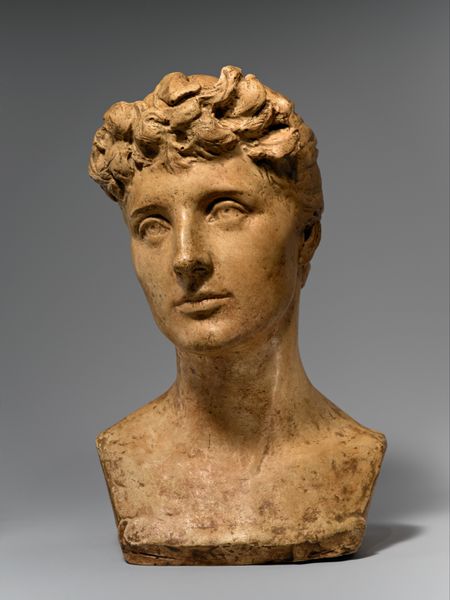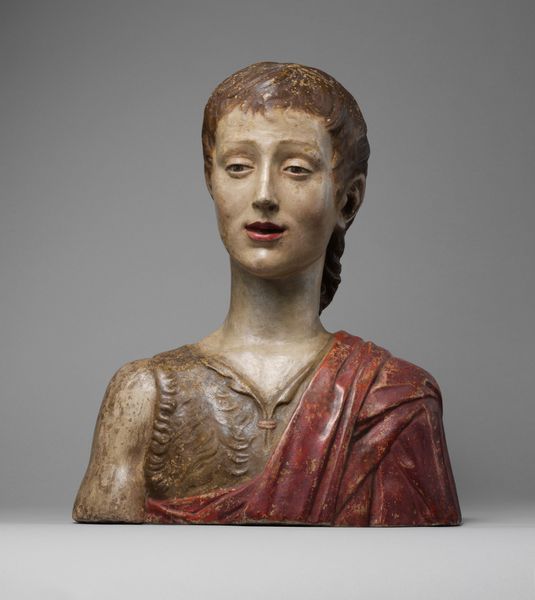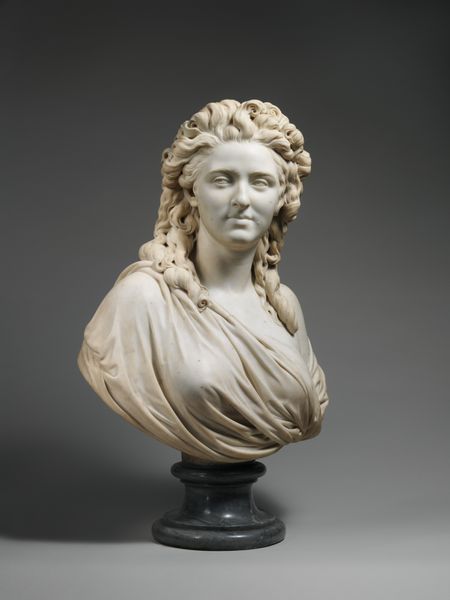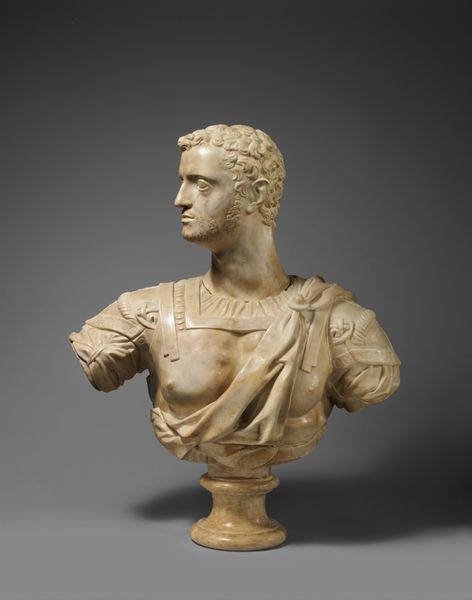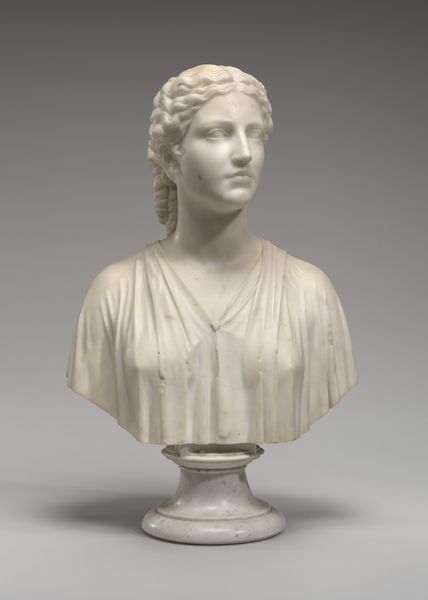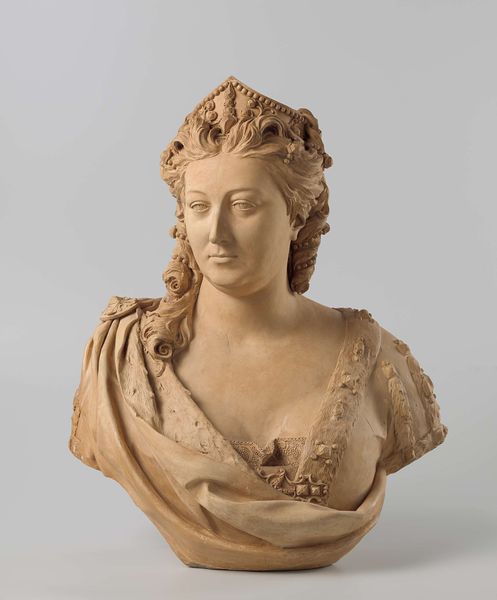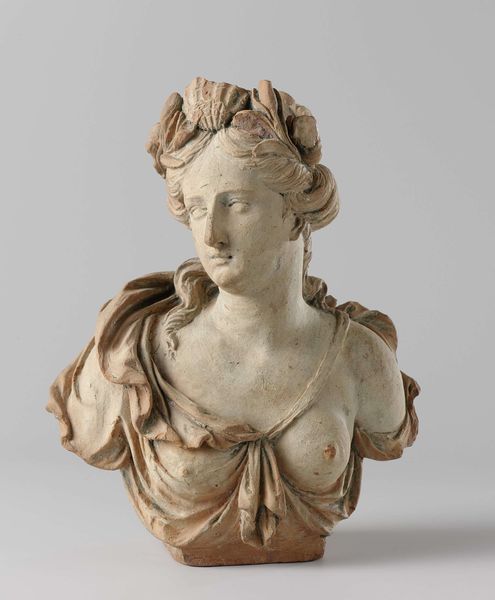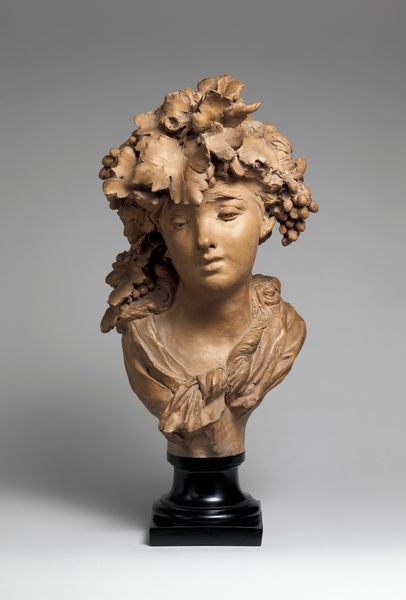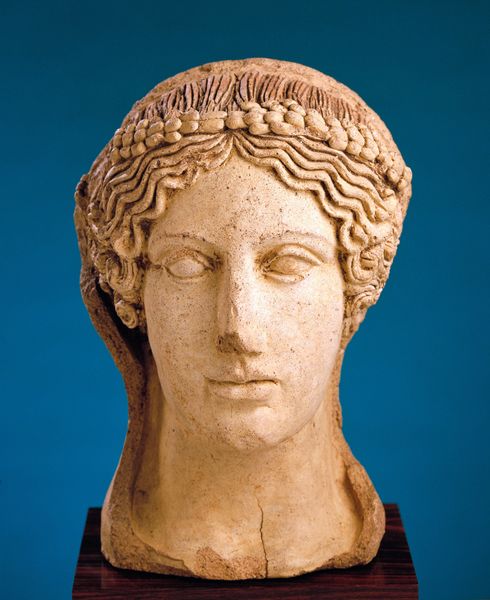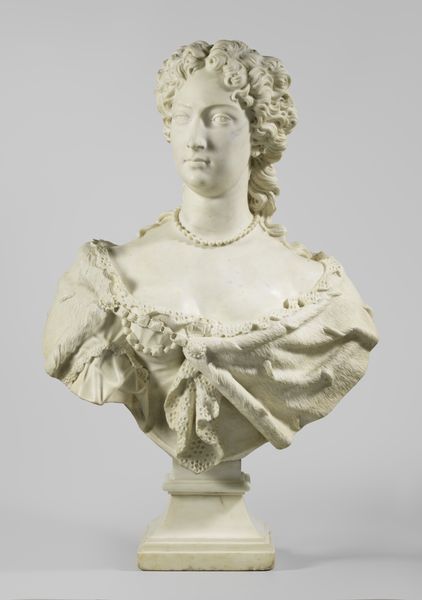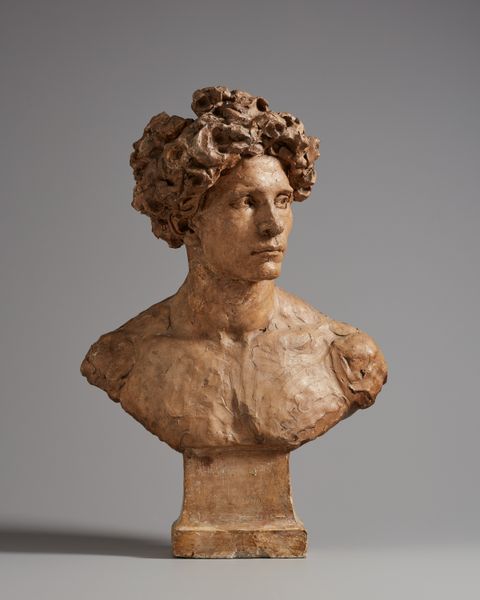
sculpture
#
website interface
#
square composition
#
sculpture
#
sculptural image
#
unrealistic statue
#
portrait head and shoulder
#
sculpting
#
ui concept
#
sculpture
#
italy
#
ruin
#
statue
Dimensions: 19 11/16 x 16 1/4 x 8 3/4 in. (50 x 41.28 x 22.23 cm)
Copyright: Public Domain
Editor: We're looking at "Saint John the Baptist" by Benedetto da Rovezzano, dating from around 1505. It's a terracotta sculpture held at the Minneapolis Institute of Art. There’s something so raw and vulnerable about the material... how would you approach interpreting a piece like this? Curator: Seeing this terracotta sculpture, my mind immediately leaps to the religious and social context of its creation. We have to consider how this piece was meant to function in society and what role it played in visualizing religious figures. A saint, a figure to be revered and emulated, rendered in terracotta rather than marble or bronze... What does that material choice tell us? Editor: It's fascinating to consider the choice of terracotta. It's less grand, maybe more accessible? Was this a deliberate move away from more opulent materials? Curator: Precisely. By the early 16th century, the politics of imagery were in flux. Florence, for example, had seen Savonarola’s bonfires of the vanities and a turn toward austerity. Do you think that shift impacted artistic production and choices like material? Editor: Absolutely, there must have been a push-pull dynamic between patronage and this newfound visual asceticism! Now that you mention it, I see the potential in this piece. Thank you! Curator: Of course. Remember, the placement and reception of religious art were powerful tools shaping public opinion. Understanding the power of imagery during this period helps us unpack these works and what they truly meant to their original audiences. Editor: So, considering these points makes this terracotta piece more than just a beautiful sculpture but a snapshot of a culture in transition. Curator: Exactly, and that’s where history truly informs how we experience art.
Comments
minneapolisinstituteofart almost 2 years ago
⋮
John the Baptist, patron saint of Florence, was a popular subject in the city. Busts of the saint as a boy were widespread, but almost unheard of elsewhere. Benedetto da Rovezzano, a pupil and collaborator of Michelangelo’s, produced a number of terra-cotta sculptures of the saint. This adolescent’s idealized face, with a narrow, straight nose and lively, layered hair, embodies the ideal of male youths found in Florentine Renaissance art. Sculptures of the young Baptist and Christ child were common features in Florentine homes, offering models of virtue for children of the household. The artist later worked for the royal courts of France and England and was instrumental in spreading the Renaissance style beyond Italy.
Join the conversation
Join millions of artists and users on Artera today and experience the ultimate creative platform.
